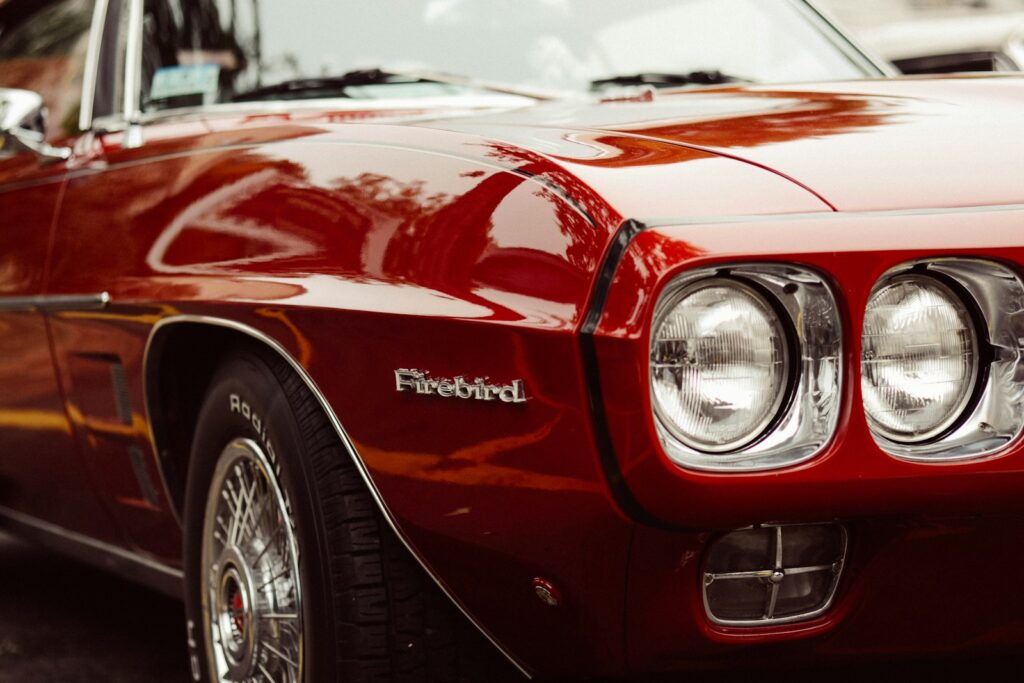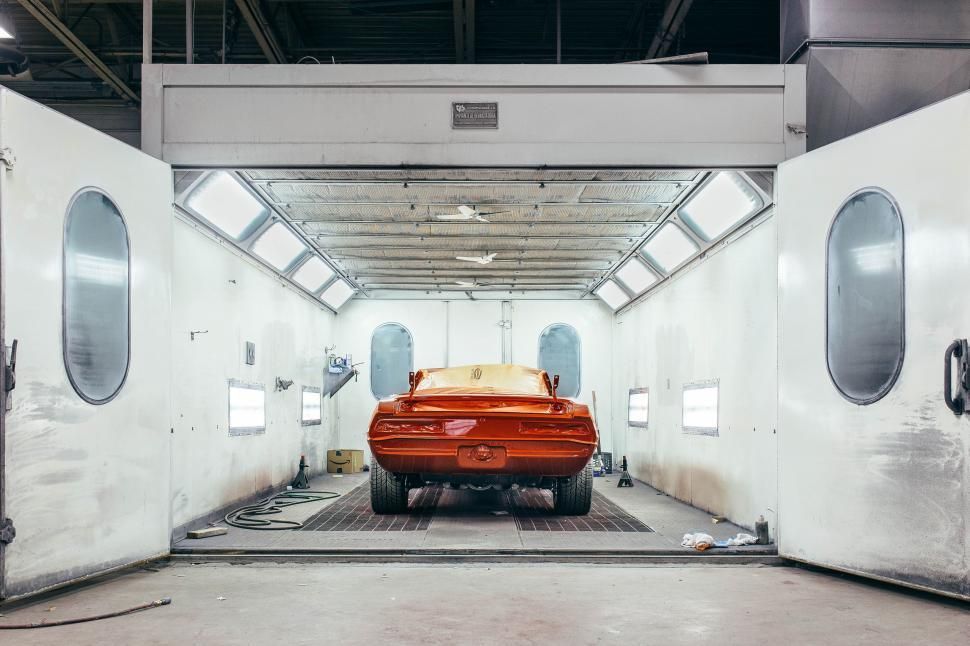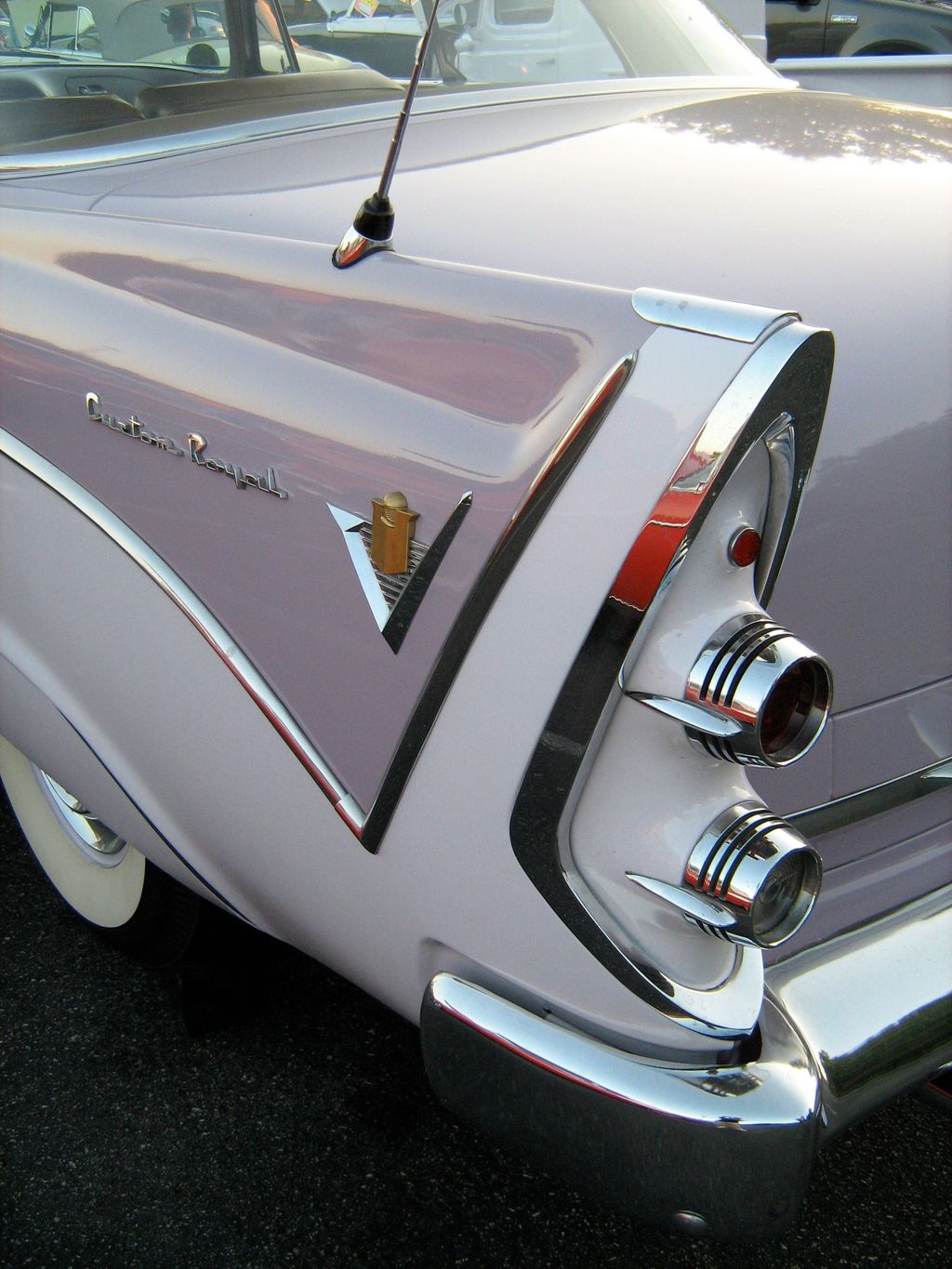
The 1950s truly stand as a golden age for American car culture, a vibrant decade brimming with an undeniable sense of confidence, lavish chrome, and groundbreaking creativity. Emerging from the shadows of World War II and the Korean War, America was experiencing an unprecedented economic boom, and carmakers found themselves with a singular, exhilarating goal: to utterly captivate and impress the burgeoning public. They responded with an outpouring of unparalleled style, audacious colors, and features that bordered on the outrageous, from towering tailfins and expansive wide grilles to futuristic bubble windshields. These weren’t merely modes of transportation; they were dynamic, rolling expressions of the American dream itself, encapsulating the optimism and prosperity of the era.
This period marked a pivotal shift for the American automotive scene, propelled by post-war optimism and a booming consumer market eager for novel experiences. Vehicles transcended their utilitarian purpose, transforming into powerful symbols of freedom, individual style, and soaring aspiration. The decade itself was profoundly shaped by a relentless wave of innovation, encompassing everything from the dramatic introduction of iconic tailfins to the application of bold, vibrant paint schemes. Manufacturers engaged in an exhilarating race to capture the hearts and imaginations of drivers with designs that were as thrilling to behold as they were functional to operate.
In this comprehensive exploration, we will meticulously examine some of the most iconic American cars from the 1950s, each one serving as a compelling snapshot of the era’s boundless creativity and ambitious spirit. Whether you are a seasoned automotive collector, a meticulous restorer, or simply a casual admirer of vintage engineering, these vehicles continue to evoke a profound sense of nostalgia and an enduring thrill. Prepare to buckle up as we embark on a fascinating journey through automotive history, delving into the captivating stories behind these timeless classics and uncovering precisely what makes them such enduring treasures in the ever-evolving automotive landscape.
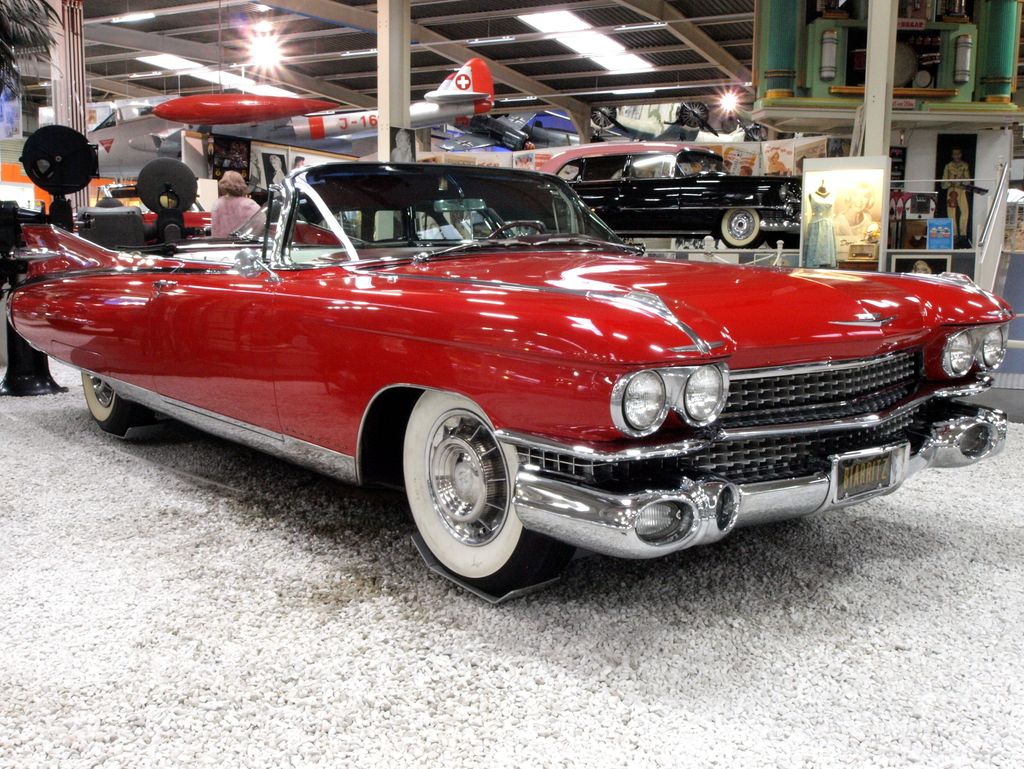
1. **1959 Cadillac: The Apex of American Excess and Luxury**The 1959 Cadillac stands as an undisputed titan, often crowned the king of automotive excess from its era, a title earned through its sheer audacity and opulent presence. Its defining characteristic, the towering tailfins, remain the tallest ever integrated into a production vehicle. These fins, sharp as a shark’s dorsal, were meticulously adorned with an abundance of gleaming chrome, creating an unmistakable visual statement that captivated onlookers. This design was so bold that it polarized opinions; people either absolutely adored it or found it ostentatious, but one thing was certain: it was impossible to ignore.
Beyond the flamboyant exterior, the 1959 Cadillac offered a genuine, uncompromised sense of luxury. The cabin provided a spacious and indulgent environment, reflective of the era’s high-society aspirations. Despite its immense size and substantial curb weight, a surprising degree of balance in its handling dynamics allowed for a remarkably composed driving experience, especially for a vehicle of such grand proportions. This model was more than just a car; it was a rolling testament to post-war prosperity, a symbol of American confidence and ambition displayed openly on the nation’s burgeoning roadways.
No serious discussion of 1950s American automobiles can be considered complete without a thorough acknowledgment of this singular showstopper. The 1959 Cadillac encapsulates the very essence of a decade that dared to dream big, to design without restraint, and to offer a driving experience that was as much about presence and prestige as it was about pure, unadulterated luxury. Its impact on design, performance, and the popular imagination cemented its place as a true automotive legend, continuing to fascinate enthusiasts worldwide.
Car Model Information: 2017 Volvo XC90 T6 Momentum
Name: Cadillac DeVille
Caption: 2004 Cadillac DeVille DHS
Manufacturer: Cadillac
Production: 1958–2005
ModelYears: 1959–2005
Class: luxury car
Layout: FR layout
Predecessor: Cadillac Series 62
Successor: Cadillac DTS
Categories: 1950s cars, 1960s cars, 1970s cars, 1980s cars, 1990s cars
Summary: The Cadillac DeVille is a model name used by Cadillac over eight generations, originally to designate a trim level of the 1949 Cadillac Series 62 and later for a standalone model in the brand range. The last model marketed specifically as a DeVille was the 2005 full-size sedan, at the time, Cadillac’s largest model.
For 2006, the DeVille nameplate was retired, when the model line was carried forward (with minor revisions) as the Cadillac DTS, using a nomenclature adopted by the Cadillac STS and CTS.
Get more information about: Cadillac de Ville series
Buying a high-performing used car >>>
Brand: Cadillac Model: 1959 Cadillac
Price: $11,500 Mileage: 165,799 mi.
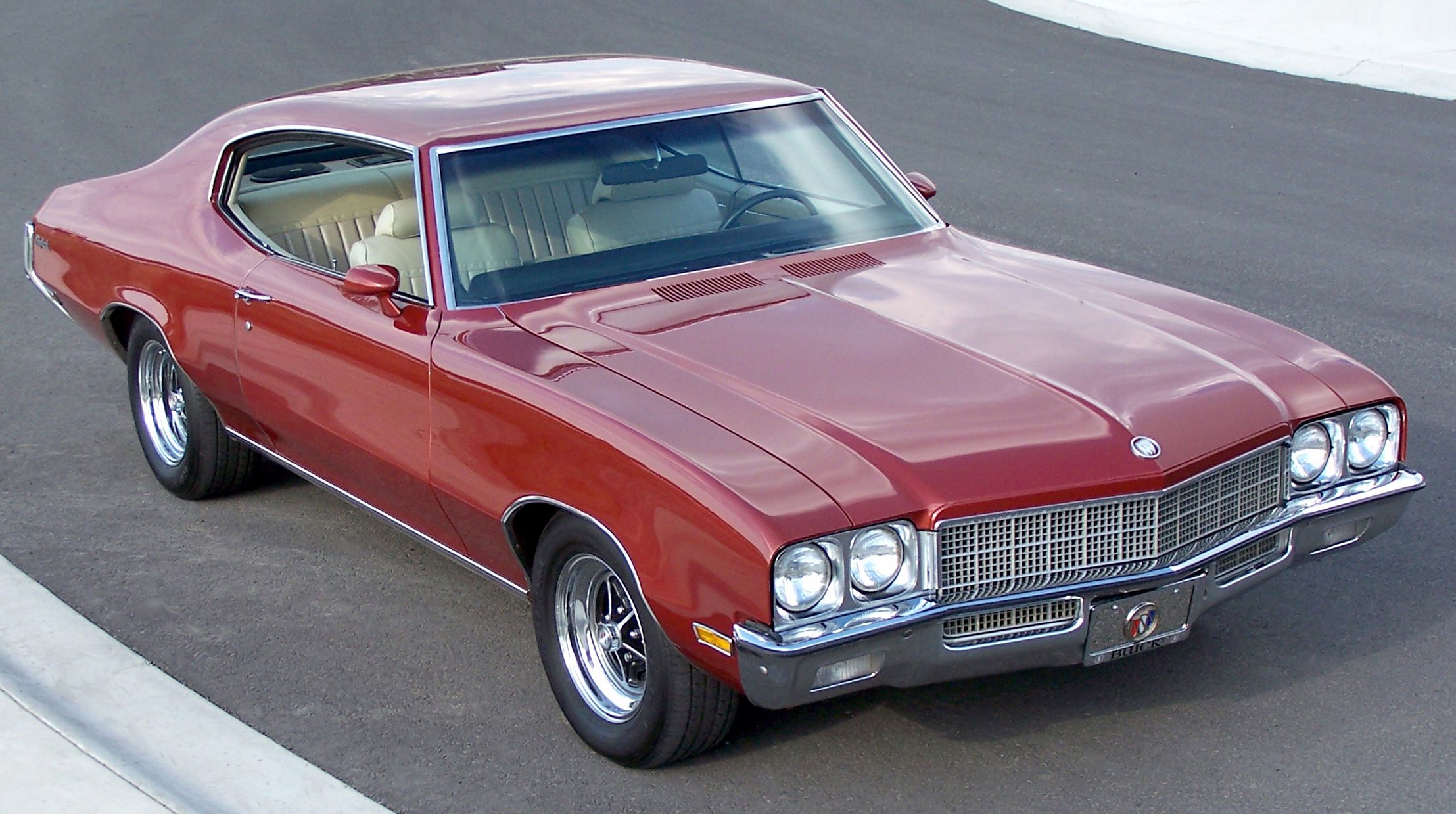
2. **1953 Buick Roadmaster Skylark: GM’s Rare and Refined Masterpiece**The 1953 Buick Roadmaster Skylark represents a zenith of General Motors’ design and engineering prowess, particularly notable for its exceptional rarity and immediate iconic status. With a production run limited to an astonishingly low 1,690 units, each Skylark convertible became an instant collectible. This limited-edition beauty was conceived as a grand celebration of Buick’s 50th anniversary, embodying an exclusive blend of style and sophistication that set it apart from its contemporaries. Its meticulous design incorporated distinct features such as elegant wire wheels and the intentional absence of traditional ventiports, contributing to its unique aesthetic.
What truly distinguished the Skylark was its innovative chopped windshield, a design element that granted it a significantly sleeker and more streamlined profile compared to its standard Roadmaster cousins. This thoughtful modification not only enhanced its visual appeal but also underscored its status as a special, performance-oriented variant. While its initial price point was considerably high for the period, reflecting its hand-crafted quality and exclusive nature, today it is widely celebrated and consistently regarded as one of GM’s most aesthetically pleasing vehicles ever conceived.
The Roadmaster lineage, of which the Skylark was a crown jewel, was also renowned for its dignified road presence and refined performance. Equipped with a robust Fireball straight-eight engine, the Roadmaster possessed a powerful yet graceful demeanor. Its Dynaflow transmission ensured an exceptionally smooth and comfortable ride, making it an ideal choice for extended cross-country road trips. This blend of comfort, class, and undeniable power solidified the Roadmaster’s, and especially the Skylark’s, reputation as a true embodiment of mid-century American luxury and engineering excellence.
Car Model Information: 2017 Volvo XC90 T6 Momentum
Name: Buick Roadmaster
Predecessor: Buick Master Six
Manufacturer: Buick
Production: 1935–1942,1946–1958,1990–1996
ModelYears: 1936–1942,1946–1958,1991–1996
Class: Full-size car
Layout: FR layout
Categories: 1950s cars, 1980s cars, 1990s cars, All articles with unsourced statements, Articles with short description
Summary: The Buick Roadmaster is an automobile built by Buick from 1936 until 1942, from 1946 until 1958, and then again from 1991 until 1996. Roadmasters produced between 1936 and 1958 were built on Buick’s longest non-limousine wheelbase and shared their basic structure with the entry-level Cadillac Series 65, the Buick Limited, and after 1940, the Oldsmobile 98. Between 1946 and 1957, the Roadmaster served as Buick’s flagship.
After being resurrected in 1991, the Roadmaster became the marque’s largest vehicle, measuring 10 in (254 mm) longer with a 5 in (127 mm) greater wheelbase than the C-body Buick Park Avenue. This generation was the first in Roadmaster history to be built on the General Motors B-body platform rather than the C-body, which had traditionally been reserved for GM’s largest and most opulent models that were not Cadillacs.
A Buick Roadmaster Estate station wagon was introduced in 1947 and was manufactured in several generations through 1996. The final run of 1991-1996 Roadmasters shared powertrains and platforms with the Chevrolet Caprice, Cadillac Fleetwood, and Oldsmobile Custom Cruiser.
Get more information about: Buick Roadmaster
Buying a high-performing used car >>>
Brand: Buick Model: Roadmaster Skylark
Price: $11,500 Mileage: 165,799 mi.
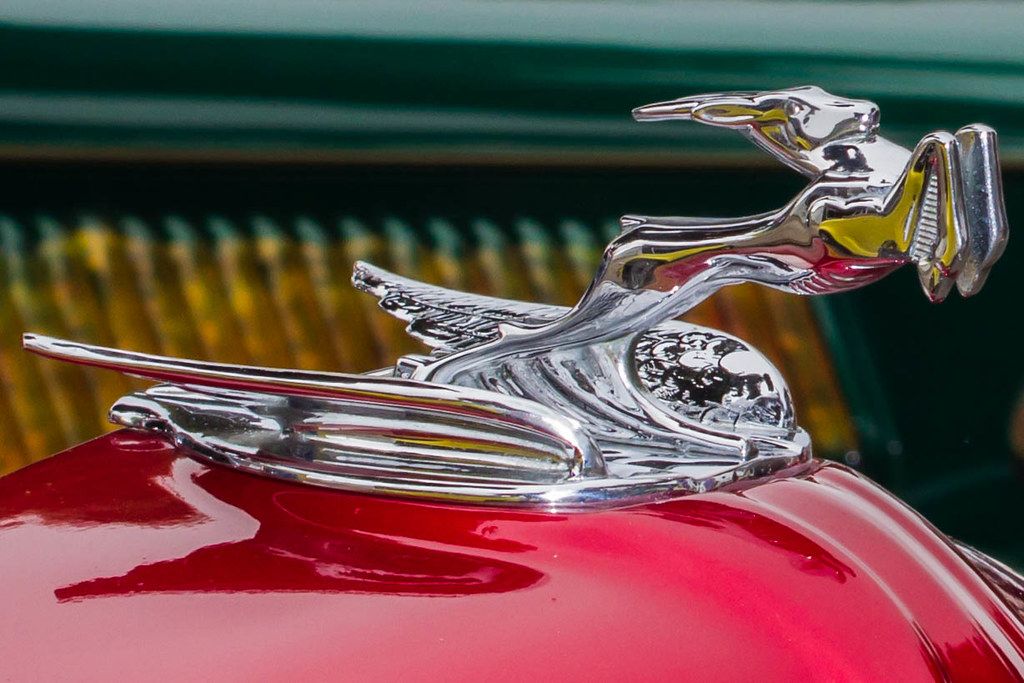
3. **1955 Chrysler C300: The Dawn of American Muscle and Sophistication**The 1955 Chrysler C300 holds a pivotal place in automotive history, famously launching Chrysler’s renowned “Letter Series” and effectively ushering in the era of high-performance luxury vehicles. Its most groundbreaking feature was the formidable 300-horsepower HEMI V8 engine, an output that was nothing short of incredible for its time. This raw power wasn’t accompanied by the flamboyant styling common to many 1950s cars; instead, the C300 presented itself with a smooth, understated elegance that belied its immense capability.
The C300 was distinguished by its quiet strength. It didn’t rely on ostentatious fins or wild, attention-grabbing colors to make a statement. Its appeal lay in its sophisticated design and formidable performance, earning respect through sheer merit rather than excessive flair. This vehicle exemplified a pioneering approach to automotive engineering, blending high-speed capability with a refined aesthetic. It was not merely fast; it represented a significant technological leap forward, signaling Chrysler’s intent to lead in both power and innovation.
Referred to by some as the “banker’s hot rod,” the Chrysler 300 commanded respect on the road and in the showrooms. Its sleek lines and imposing stance conveyed both elegance and raw power. The integration of the Hemi V8 delivered an unprecedented level of performance, making it a true forerunner to the muscle car genre that would fully emerge in later decades. This car was a testament to Chrysler’s vision, proving that high horsepower could coexist with a classic, sophisticated design, and cementing its legacy as a true automotive icon and a pioneer of American performance.
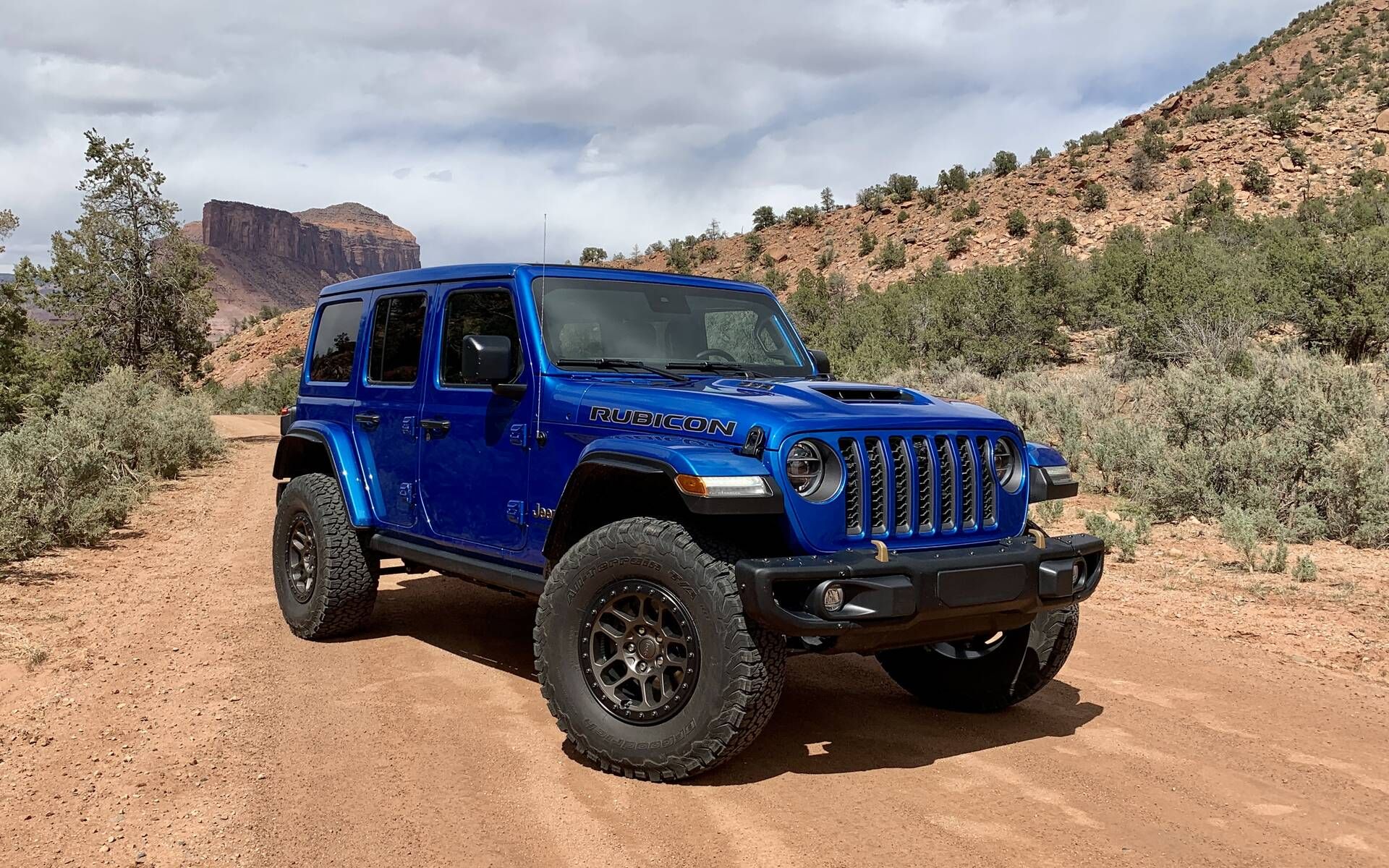
4. **Jeep CJ-5: The Enduring Warrior-Turned-Workhorse of American Off-Roading**The Jeep CJ-5 stands as a testament to durability and utilitarian design, directly evolving from the robust military Jeeps that proved indispensable during World War II and the Korean War. This lineage endowed the CJ-5 with an unparalleled reputation for ruggedness and reliability, quickly establishing it as a civilian icon across America. Its design prioritized functionality over flash, reflecting its pragmatic origins and purpose. Farmers, ranchers, and adventurous spirits alike quickly adopted the CJ-5, appreciating its unwavering dependability and exceptional off-road capability.
While the CJ-5 never aimed for the same aesthetic extravagance as its contemporary passenger cars, its straightforward, no-nonsense build resonated deeply with a segment of the American public seeking a vehicle truly capable of tackling challenging terrains and demanding tasks. It was a machine built for utility, designed to perform reliably in environments where other vehicles would falter. This focus on practical performance cemented its role as a workhorse, proving its worth in countless applications from agricultural fields to remote wilderness trails.
More than just a versatile utility vehicle, the Jeep CJ-5 played a crucial role in igniting America’s enduring fascination and love affair with off-road and sport utility vehicles. Its legacy is not just in its mechanical fortitude but in its cultural impact, establishing a category of vehicle that prioritized adventure and functionality. The CJ-5 demonstrated that a vehicle could be both a tool and a means of exploration, paving the way for the vast and varied SUV market that thrives today, all while maintaining its status as a dependable and beloved classic.
Car Model Information: 1976 Jeep CJ-5 Base
Name: Jeep CJ
Caption: Jeep CJ-2A
Manufacturer: Willys-Overland,Willys Motors,Kaiser Jeep,American Motors Corporation
BodyStyle: Sport utility vehicle,convertible,pickup truck
Production: 1944–1986,More than 1.5 million
Class: sport utility vehicle
Layout: Front-engine, rear-wheel-drive layout,rear-wheel drive
Assembly: Toledo Complex,Maywood, California,Brampton Assembly (AMC),Pars Khodro,Cairo,Istanbul,São Bernardo do Campo
Successor: Jeep Wrangler,Jeep Comanche
Predecessor: Willys MB,Jeep Commando
Categories: AMC vehicles, All articles with unsourced statements, American Motors, Articles with short description, Articles with unsourced statements from April 2025
Summary: The Jeep CJ models are a series and a range of small, open-bodied off-road vehicles and compact pickup trucks, built and sold by several successive incarnations of the Jeep automobile marque from 1945 through 1986. The 1945 Willys “Universal Jeep” was the world’s first mass-produced civilian four-wheel drive car.
In 1944, Willys-Overland, the primary manufacturer of the World War II military Jeep, built the first prototypes for a commercial version – the CJ, short for “civilian Jeep”. The design was a direct evolution from the wartime Jeep, but the most obvious change was adding a tailgate, and relocating the spare wheel to the side. Also, besides adding basic civilian amenities and options and legally-compliant lighting, the CJ required a sturdier drivetrain than the wartime model, because the targeted rural buyers would expect years of durability, instead of mere weeks as during WWII.
From then on, all CJ Jeeps consistently had a separate body and frame, rigid live axles with leaf springs both front and rear, a tapering nose design with flared fenders, and a fold-flat windshield, and could be driven without doors. Also, with few exceptions, they had part-time four-wheel drive systems, with the choice of high and low gearing, and open bodies with removable hard or soft tops. A few stand-out changes during 42 model years were the introductions of round-fendered vs. flat-fendered bodies (1955 CJ-5), straight-6 and V8-engines, automatic gearboxes, and different 4-wheel drive systems. The 1976 CJ-7 stretched the wheelbase by 10 inches (25 cm), and made doors and a removable hardtop common items.
After remaining in production through a range of model numbers, and several corporate parents, the Jeep CJ line was officially ended after 1986. More than 1.5 million CJ Jeeps were built, having continued the same basic body style for 45 years since the Jeep first appeared. Widely regarded as “America’s workhorse”, the CJs have been described as “probably the most successful utility vehicle ever made.” American Motors VP Joseph E. Cappy said the end of “CJ production will signal an end of a very important era in Jeep history.” In 1987, the Jeep CJ-7 was replaced by the first-generation Jeep Wrangler. Looking very similar and riding on the same wheelbase as the CJ-7, it carried over some important components, including its use of leaf springs.
The similar model the DJ “Dispatcher” was introduced in 1956 as a two-wheel drive version with open, fabric, or a closed steel body in both left- and right-hand drives for hotel, resort, police, and later United States Postal Service markets.
Get more information about: Jeep CJ
Buying a high-performing used car >>>
Brand: Jeep Model: CJ-5
Price: $19,999 Mileage: 19,958 mi.
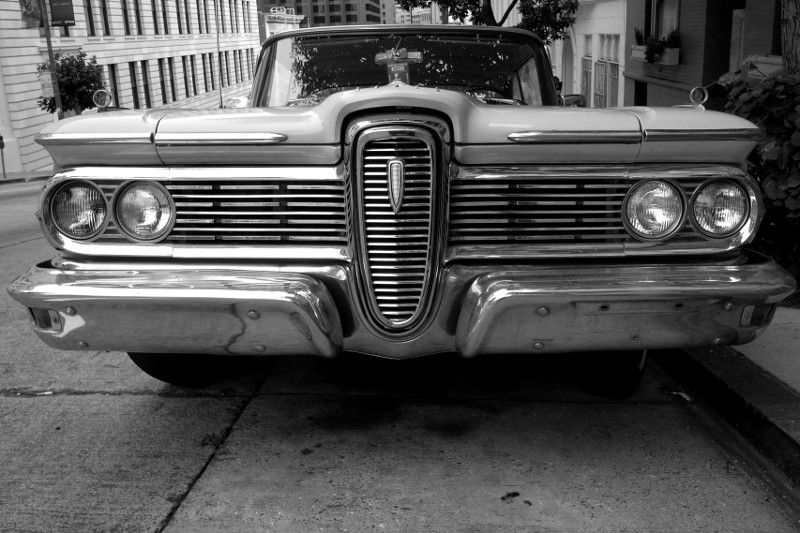
5. **1958 Edsel: The Misunderstood Classic — A Bold Design Reimagined**The 1958 Edsel remains one of Ford’s most famously documented commercial challenges at its initial launch, often cited as a significant flop. Yet, with the passage of time, this distinctive automobile is finally garnering the respect and appreciation it truly deserves. Its design, particularly the unique “horse collar” grille, was undeniably avant-garde and controversial for its period, setting it apart from more conventional offerings. This striking front-end styling, combined with a suite of advanced features, ensured the Edsel was a standout from a purely design-centric perspective, embodying a bold departure from the norm.
The Edsel was not a homogenous offering; it came in several distinct models and trim levels, each designed to cater to various market segments. Despite its initial commercial missteps, under the hood, it was consistently loaded with robust V8 power, providing ample performance to match its unconventional looks. This commitment to engineering capability, even within a challenging design package, underscores Ford’s ambition for the brand.
Once unfairly synonymous with failure and commercial misjudgment, the 1958 Edsel has been re-evaluated by collectors and enthusiasts alike. Today, it stands as a compelling symbol of bold risk-taking in automotive design and marketing. It represents an era when manufacturers dared to push boundaries, even if the public wasn’t immediately ready to embrace such radical departures. The Edsel’s enduring presence in classic car circles serves as a fascinating study in automotive history, reminding us that true innovation can sometimes be ahead of its time, eventually earning its rightful place as a celebrated classic.
Car Model Information: 1958 Edsel Citation
BirthName: Edsel Bryant Ford
Caption: Ford in 1921
BirthDate: [object Object]
BirthPlace: Detroit, Michigan
DeathDate: [object Object]
DeathPlace: Grosse Pointe Shores, Michigan
Occupation: Automobile executive
Title: Ford Motor Company
Spouse: [object Object]
Parents: Henry Ford,Clara Bryant Ford
Relations: Edsel Ford II
Children: Henry Ford II,Benson Ford,Josephine Ford,William Clay Ford Sr.
Categories: 1893 births, 1943 deaths, 20th-century American businesspeople, All articles with dead external links, American art collectors
Summary: Edsel Bryant Ford (November 6, 1893 – May 26, 1943) was an American business executive and philanthropist, who was the only child of pioneering industrialist Henry Ford and his wife, Clara Jane Bryant Ford. He was the president of Ford Motor Company from 1919 until his death in 1943. He worked closely with his father, as sole heir to the business, but was keen to develop cars more exciting than the Model T (“Tin Lizzie”), in line with his personal tastes. Even as president, he had trouble persuading his father to allow any departure from this formula. Only a change in market conditions enabled him to develop the more fashionable Model A in 1927. Edsel also founded the Mercury division and was responsible for the Lincoln-Zephyr and Lincoln Continental. He introduced important features, such as hydraulic brakes, and greatly strengthened the company’s overseas production. Ford was a major art benefactor in Detroit and also financed Admiral Richard Byrd’s polar explorations. He died of stomach cancer aged 49. Henry Ford temporarily reassumed the presidency of Ford Motor Company on Edsel’s death, then Edsel’s eldest son, Henry Ford II, succeeded Henry as president of the company in 1945. He was also a member of the board of directors of American IG, the American subsidiary of the German chemical conglomerate IG Farben.
Get more information about: Edsel Ford
Buying a high-performing used car >>>
Brand: Ford Model: Edsel
Price: $7,800 Mileage: 68,904 mi.
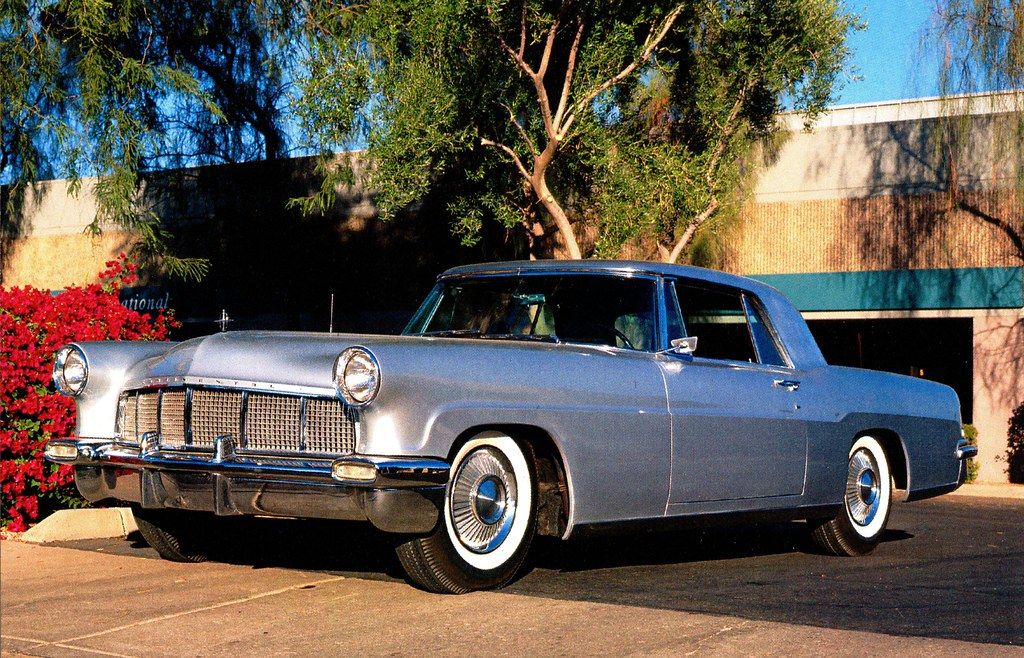
6. **1956-57 Continental Mark II: Ford’s Masterpiece of Exclusivity and Flawless Craftsmanship**The 1956-57 Continental Mark II was Ford’s audacious and unequivocal answer to the world-renowned Rolls-Royce, a testament to American luxury and engineering ambition. This vehicle was not a product of typical mass production; instead, each unit was meticulously hand-built, rigorously tested, and subjected to extreme levels of inspection to ensure unparalleled quality and precision. This painstaking approach resulted in a car where every detail, from the flawless paint finish to the precisely engineered wheels, was executed to perfection, making it a true paragon of automotive craftsmanship.
The Mark II represented the pinnacle of exclusivity, a luxury statement that transcended mere transportation. Its astronomical price tag of over $10,000 in the 1950s was a monumental sum, effectively limiting ownership to the uppermost echelons of society. Celebrities and prominent figures of the era, including icons like Frank Sinatra and Elvis Presley, were known to own these magnificent machines, further solidifying its status as an elite’s ride. It was a vehicle that wasn’t just owned; it was acquired, signifying a certain social standing and a deep appreciation for the finer things in life.
Beneath its exquisitely refined exterior, the Continental Mark II boasted a powerful engine and state-of-the-art features for its time, ensuring that its driving experience was as sophisticated as its aesthetics. It was, quite literally, luxury on wheels, with every component meticulously crafted to provide an unparalleled journey. The Mark II’s legacy is one of uncompromising quality, timeless elegance, and a bold declaration by Ford that American luxury could rival, if not surpass, the finest offerings from anywhere in the world, establishing its enduring renown in automotive history.
Car Model Information: 2024 Acura RDX Base
Caption: 1956 Continental Mark II
Predecessor: Lincoln Continental#First generation (1940–1942, 1946–1948)
Successor: Lincoln Continental Mark III,Lincoln Continental#Third generation (1958–1960)
Name: Continental Mark II
ModelYears: 1956–1957
Manufacturer: Ford Motor Company
Assembly: Ford Pilot Plant,Allen Park, Michigan
Related: Lincoln Futura
Layout: Front-engine, rear-wheel-drive layout
BodyStyle: hardtop
Engine: 368 cuin
Abbr: on
Transmission: Turbo-Drive 3-speed automatic
Wheelbase: 126.0 in
Length: 218.4 in
Width: 77.5 in
Height: 56.3 in
Weight: 5000 lb
Designer: John Reinhart (1953)
Categories: Articles with short description, Cars discontinued in 1957, Cars introduced in 1956, Commons category link from Wikidata, Ford Motor Company marques
Summary: The Continental Mark II is an ultra-luxury coupé that was sold by the Continental Division of Ford for the 1956 and 1957 model years. The first (and only) product line of Continental, the Mark II was developed as the worldwide flagship vehicle of Ford Motor Company. Developed as a successor for the 1939–1948 Lincoln Continental, the Mark II derived its nameplate from European manufacturing practice, denoting a second generation of the model family; Ford would later use this nomenclature for the Mark Series of flagship personal luxury cars. As the most expensive American-produced automobile of the time, the Mark II was marketed against the Rolls-Royce Silver Cloud and the Bentley Continental. Produced solely as a two-door hardtop coupe, the Mark II was largely hand-assembled, sourcing its V8 powertrain from the standard Lincoln line. Following the 1957 model year, the Mark II was discontinued, with the hand-built coupe replaced by a rebranded Lincoln. For 1969, Ford revived the Mark series chronology, debuting the (second) Continental Mark III coupe, leading to five successive generations, ending with the 1998 Lincoln Mark VIII coupe. Alongside its nameplate nomenclature, the Mark II debuted the integrated “Continental” spare-tire trunklid (in place of a bumper-mounted spare tire); each generation of the Mark Series (alongside the 1977–1980 Lincoln Versailles and 1982–1987 Lincoln Continental) used a variation of this feature. The Mark II also debuted the rectangular four-point star emblem, which remains in use on Lincoln-brand vehicles (in modified form) today. The Mark II was assembled by Ford at Allen Park Body and Assembly in Allen Park, Michigan. Following the discontinuation of the Mark II, the facility was converted to the headquarters of the ill-fated Edsel brand. Today, it remains as the Ford Pilot Plant, where Ford pre-production vehicles are hand-assembled for testing and production development.
Get more information about: Continental Mark II
Buying a high-performing used car >>>
Brand: Continental Model: Mark II
Price: $45,000 Mileage: 6,140 mi.
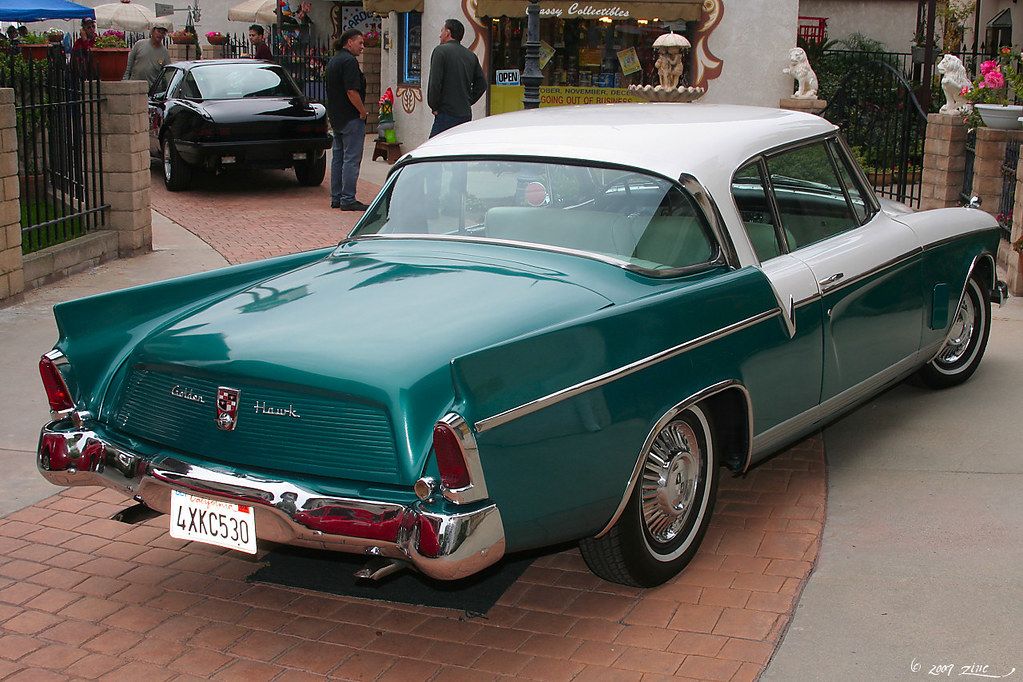
7. **1957 Studebaker Golden Hawk: Supercharged Style Meets Performance Prowess**The 1957 Studebaker Golden Hawk was a captivating blend of dramatic styling and serious performance, proving that smaller manufacturers could indeed compete with the established giants of the automotive industry. This striking beauty came factory-equipped with a potent 289 V8 engine, further enhanced by the notable inclusion of a Paxton supercharger. This combination delivered a thrilling level of power and acceleration, placing the Golden Hawk firmly in the realm of high-performance vehicles of its day and earning it a reputation as a true “sleeper” among enthusiasts.
Visually, the Golden Hawk was an undeniable head-turner. Its styling was profoundly dramatic, characterized by sweeping fins that exuded a sense of dynamic motion and speed. These bold design elements were often complemented by vibrant two-tone paint options, which collectively screamed “fast and classy,” appealing to drivers who desired both exhilarating performance and a distinctive aesthetic presence. It was a car designed to make an indelible statement on the road, reflecting an era where design was as much about aspiration as it was about engineering.
Despite Studebaker being a smaller player in the intensely competitive automotive landscape, the 1957 Golden Hawk unequivocally demonstrated their capacity to innovate and produce vehicles that could stand toe-to-toe with the offerings from larger, more resourced manufacturers. This model was a testament to Studebaker’s engineering ingenuity and design audacity. It was bold, muscular, and meticulously crafted to stand out, embodying a spirit of individuality and high-octane performance that continues to captivate classic car aficionados and ensure its esteemed place in automotive history.
Having explored the foundational pioneers of the early 1950s, our journey into this electrifying automotive era deepens. We now turn our attention to the vehicles that cemented the decade’s reputation for audacious design, remarkable performance, and indelible cultural impact. These aren’t just cars; they are coveted pieces of American history, each with a unique narrative of innovation and enduring appeal that continues to captivate collectors and enthusiasts worldwide. From groundbreaking styling cues to the introduction of truly advanced features, these next eight machines underscore the immense creativity and technological ambition that defined the post-war American automotive landscape, solidifying their status as highly sought-after classics in today’s vibrant collector’s market.
Car Model Information: 2024 Acura RDX Base
Layout: FR layout
Caption: 1956 Studebaker Golden Hawk
Name: Studebaker Golden Hawk
Manufacturer: Studebaker
Assembly: Studebaker Corporation#Studebaker Factories,South Bend, Indiana,United States,Studebaker Canada,Hamilton, Ontario,Canada
BodyStyle: hardtop
Categories: All articles needing additional references, All articles with unsourced statements, Articles needing additional references from June 2011, Articles with short description, Articles with unsourced statements from January 2016
Summary: The Studebaker Golden Hawk is a two-door pillarless hardtop personal luxury car produced by the Studebaker Corporation of South Bend, Indiana, between 1956 and 1958.
Get more information about: Studebaker Golden Hawk
Buying a high-performing used car >>>
Brand: Studebaker Model: Golden Hawk
Price: $45,000 Mileage: 6,140 mi.
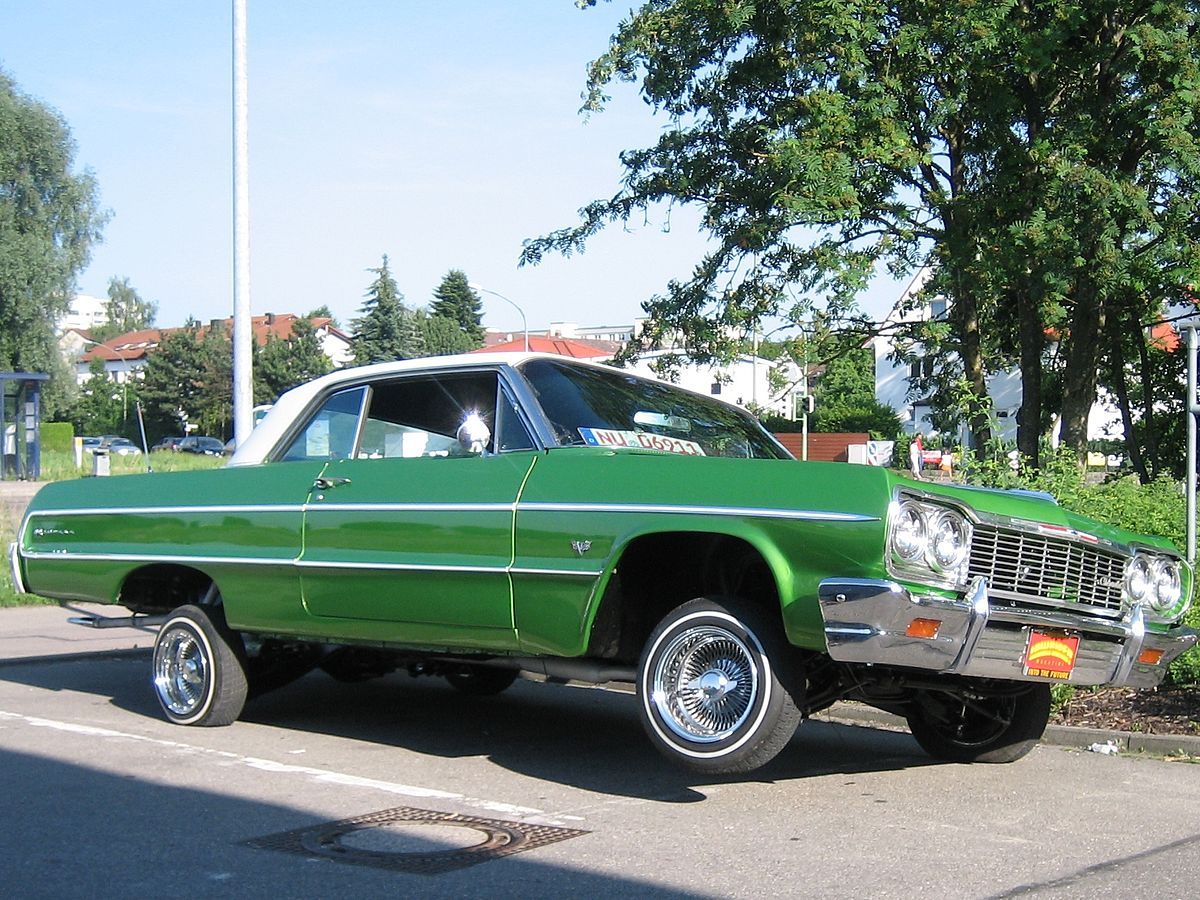
8. **1958 Chevrolet Impala: The Birth of a Legend**The 1958 Chevrolet Impala represents a pivotal moment in American automotive history, debuting not as a standalone model, but as the top-tier trim level for the Bel Air. This strategic positioning immediately imbued it with a sense of elevated status and desirability. Its aesthetic was a bold departure, characterized by distinctive quad headlights and a meticulously sculpted body, hinting at a new era of automotive artistry. The Impala’s interior was equally striking, offering a level of style and sophistication that instantly captivated the public, cementing its place as an instant classic from the moment it rolled off the assembly line.
Performance-wise, the 1958 Impala was engineered to match its stunning looks. Available with a range of powerful engine options, including robust 348 cubic inch V8s and even advanced fuel injection systems, it delivered exhilarating acceleration and formidable road presence. This combination of raw power and elegant design ensured that the Impala was indeed “as fast as it looked,” providing a truly compelling driving experience that resonated with performance enthusiasts. The engineering focus was clearly on delivering not just speed, but a refined power delivery suitable for a top-of-the-line offering.
What truly sets the 1958 Impala apart, and contributes significantly to its enduring legacy in the collector’s market, is its unique, one-year-only design. Unlike later Impala iterations, the ’58 model boasts styling elements that were exclusive to that production cycle, making it a distinctive and highly prized acquisition for connoisseurs. This singular design choice, coupled with its robust mechanical underpinnings and foundational role in establishing one of Chevrolet’s most iconic nameplates, has ensured its consistent popularity at auctions and classic car shows, where its beauty and historical significance are always celebrated.
Car Model Information: 1963 Chevrolet Impala Base
Name: Chevrolet Impala
Caption: Fourth generation model (1967)
Manufacturer: Chevrolet
Production: 1957–1985,1994–1996,1999–2020
ModelYears: 1958–1985,1994–1996,2000–2020
Predecessor: Chevrolet Bel Air,Chevrolet Lumina#Second generation (1995–2001)
Successor: Chevrolet SS,Chevrolet Caprice
Platform: GM B platform,GM W platform,GM W platform (GMX211) (2005–2013),GM Epsilon platform#Epsilon II
Class: Full-size car,Mid-size car
Layout: Front-engine, rear-wheel-drive layout,Front-engine, front-wheel-drive layout
Categories: 1960s cars, 1970s cars, 1980s cars, 1990s cars, 2000s cars
Summary: The Chevrolet Impala () is a full-size car that was built by Chevrolet for model years 1958 to 1985, 1994 to 1996, and 2000 to 2020. The Impala was Chevrolet’s popular flagship passenger car and was among the better-selling American-made automobiles in the United States. For its debut in 1958, the Impala was distinguished from other models by its symmetrical triple taillights. The Chevrolet Caprice was introduced as a top-line Impala Sport Sedan for model year 1965, later becoming a separate series positioned above the Impala in 1966, which, in turn, remained above the Chevrolet Bel Air and the Chevrolet Biscayne. The Impala continued as Chevrolet’s most popular full-sized model through the mid-1980s. Between 1994 and 1996, the Impala was revised as a 5.7-liter V8–powered version of the Chevrolet Caprice Classic sedan. In 2000, the Impala was reintroduced again as a mainstream front-wheel drive car. In February 2014, the 2014 Impala ranked No. 1 among Affordable Large Cars in U.S. News & World Report’s rankings. When the 10th generation of the Impala was introduced for the 2014 model year, the 9th generation was rebadged as the Impala Limited and sold only to fleet customers through 2016. During that time, both versions were sold in the United States and Canada. The 10th-generation Impala was also sold in the Middle East and South Korea.
Get more information about: Chevrolet Impala
Buying a high-performing used car >>>
Brand: Chevrolet Model: Impala
Price: $99,991 Mileage: 15,837 mi.
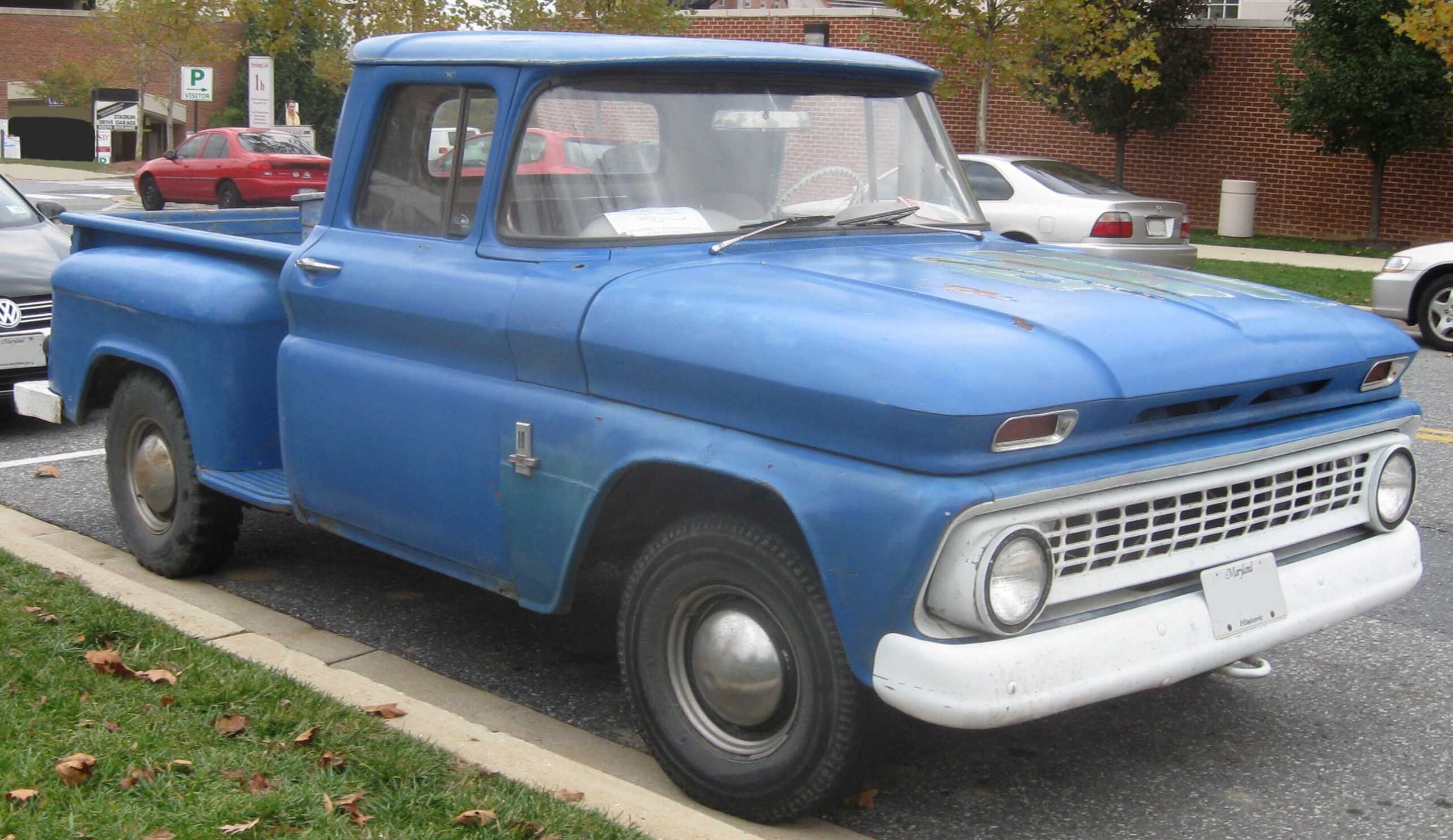
9. **1955-57 Chevrolet Cameo Pickup: When Trucks Got Stylish**The 1955-57 Chevrolet Cameo Pickup shattered conventional perceptions of what a utility vehicle could be, transforming the utilitarian truck into a genuine style statement. Prior to its arrival, pickups were largely seen as purely functional workhorses, devoid of aesthetic flair. The Cameo, however, boldly integrated fiberglass panels seamlessly into a traditional Stepside body, achieving an unprecedented blend of robust utility and refined beauty. This innovative design demonstrated that practicality didn’t have to come at the expense of visual appeal.
Beyond its ground-breaking exterior, the Cameo Pickup was adorned with gleaming chrome accents and featured smooth, flowing lines that evoked the contemporary passenger car designs of the era. The attention to detail extended to its interior, which was surprisingly refined, offering a level of comfort and finish rarely found in its segment. This pioneering approach fundamentally challenged the status quo, effectively showing Americans that their pickups could be just as “pretty as a car,” opening up new avenues for truck design and consumer expectations.
The cultural significance of the Cameo cannot be overstated; it was a trailblazer that laid the groundwork for the modern, stylish pickup truck. Its limited production run and status as a design innovator have made it a highly sought-after classic today, particularly among collectors who appreciate its role in redefining an entire vehicle category. Its enduring legacy is a testament to Chevrolet’s foresight in recognizing the potential for trucks to become more than just tools, but extensions of personal style and aspiration.
Car Model Information: 2024 Acura RDX Base
Caption: 1956 Chevrolet Task Force (3100)
Name: Chevrolet Task Force Series
Manufacturer: Chevrolet
Aka: unbulleted list
Production: 1955–1959
Assembly: unbulleted list
Layout: Front-engine, rear-wheel-drive layout,rear-wheel drive
BodyStyle: pickup truck
Class: Pickup truck,commercial truck
Platform: General Motors A platform (RWD)
Related: Chevrolet Suburban#Fourth generation (1955)
Predecessor: Chevrolet Advance Design
Successor: Chevrolet C/K#First generation (1960–1966)
Engine: ubl
Abbr: on
Transmission: unbulleted list
Wheelbase: unbulleted list
Categories: 1950s cars, Articles with short description, Cars introduced in 1955, Chevrolet trucks, Commons category link from Wikidata
Summary: The Chevrolet Task Force (or in some cases, Task-Force) is a light-duty (3100-short bed & 3200-long bed) and medium-duty (3600) truck series by Chevrolet introduced in 1955, its first major redesign since 1947. Known as the Blue Chip in the parallel GMC it had more modern design than the preceding Advance Design without sacrificing ruggedness or durability.
First available on March 25, 1955, these trucks were sold with various minor changes over the years from 1955 (2nd series) until 1957. Model years 1955 & 1956 had the “egg crate grill”. 1955 had the emblems below the lateral line of the front fender, whereas in 1956, the emblem was located above the lateral line and the hood emblem was a bit higher on the hood. In 1957, the grill changed to a more open design and the hood was given “spears” resembling the Bel Air.
In 1958 the series was renamed “Apache”, found on fender emblems, given a second set of headlights, and received other minor changes. The model continued with minor changes through 1959.
In 1960 the truck was replaced by the new C/K Series, but this retained the Apache name for some years.
Get more information about: Chevrolet Task Force
Buying a high-performing used car >>>
Brand: Chevrolet Model: Cameo Pickup
Price: $45,000 Mileage: 6,140 mi.
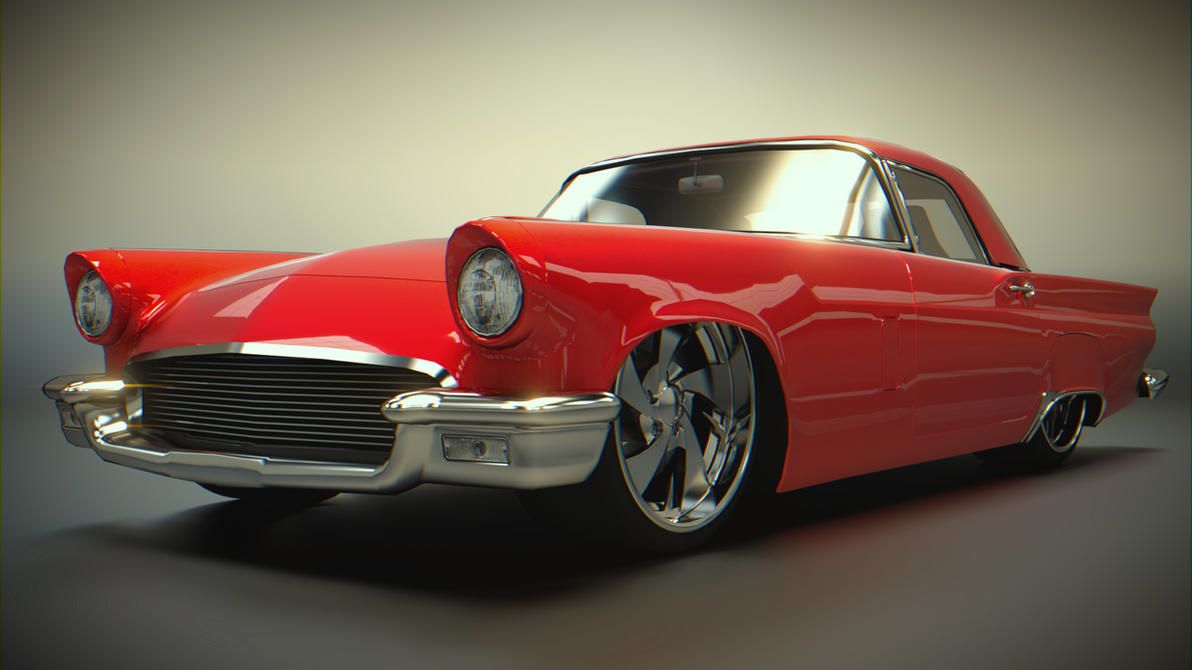
10. **1955-57 Ford Thunderbird: Personal Luxury Arrives**The 1955-57 Ford Thunderbird, affectionately known as the “T-Bird,” carved out a distinct niche in the burgeoning American automotive landscape, offering a compelling alternative to the performance-centric Chevrolet Corvette. Ford consciously steered the Thunderbird towards a philosophy centered on “personal luxury,” emphasizing sophisticated style and unparalleled comfort rather than raw, uncompromising speed. This strategic positioning resonated deeply with a segment of buyers seeking elegance and a relaxed cruising experience.
From a performance standpoint, the Thunderbird was more than capable, offering enthusiasts options like a formidable supercharged 312 V8 engine, providing ample power for spirited driving without sacrificing its refined demeanor. The interior bespoke luxury, featuring inviting bucket seats and the choice of either a sleek soft top or a practical hard top, enhancing its versatility and appeal. This fusion of a potent powertrain with a lavish cabin underscored its identity as a truly “classy, compact, and personal” two-seater, meticulously crafted for the joy of open-road cruising.
The Thunderbird’s cultural impact was immediate and profound, establishing the “personal luxury car” as a legitimate and desirable category. Its timeless design and focus on sophisticated enjoyment have ensured its enduring appeal in the collector’s market. Today, these early T-Birds are cherished not only for their distinctive style and comfortable ride but also for their significant role in shaping automotive trends, representing a bygone era when driving was as much about making a statement as it was about reaching a destination.
Car Model Information: 2003 Ford Thunderbird
Name: Ford Thunderbird
Caption: 1957 Thunderbird
Manufacturer: Ford Motor Company
Production: unbulleted list
ModelYears: unbulleted list
Class: unbulleted list
Layout: Front-engine, rear-wheel drive layout
Categories: 1960s cars, 1970s cars, 1980s cars, 1990s cars, 2000s cars
Summary: The Ford Thunderbird is a personal luxury car manufactured and marketed by Ford Motor Company for model years 1955 to 2005, with a hiatus from 1998 to 2001.
Ultimately gaining a broadly used colloquial nickname, the T-Bird, the model was introduced as a two-seat convertible, subsequently offered variously in a host of body styles including as a four-seat hardtop coupe, four-seat convertible, five-seat convertible and hardtop, four-door pillared hardtop sedan, six-passenger hardtop coupe, and five-passenger pillared coupe, before returning in its final generation, again as a two-seat convertible.
At its inception, Ford targeted the two-seat Thunderbird as an upscale model. The 1958 model year design introduced a rear seat and arguably marked the expansion of a market segment that came to be known as personal luxury cars, positioned to emphasize comfort and convenience over handling and high-speed performance.
Get more information about: Ford Thunderbird
Buying a high-performing used car >>>
Brand: Ford Model: Thunderbird
Price: $15,000 Mileage: 49,430 mi.
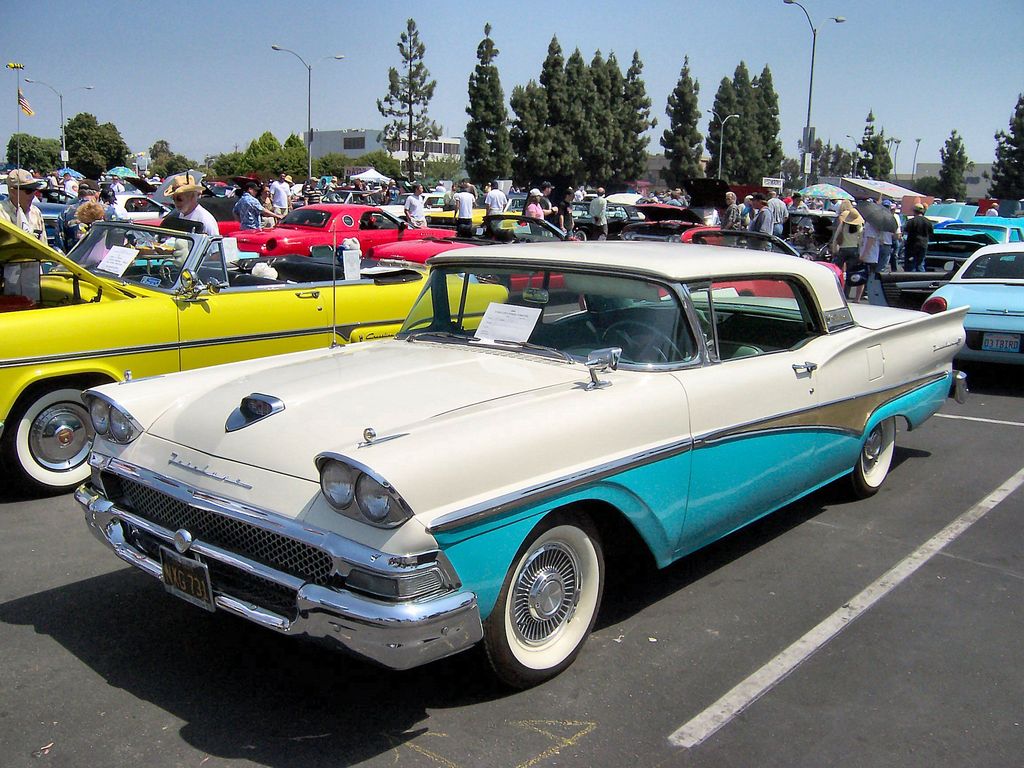
11. **1957-59 Ford Fairlane Skyliner: The Roof That Vanished**The 1957-59 Ford Fairlane Skyliner stands as a monumental achievement in automotive engineering, easily qualifying as one of the most technologically advanced vehicles of its decade. Its defining feature, the retractable hardtop, was nothing short of revolutionary. At the touch of a button, the entire steel roof would artfully fold and disappear into the trunk, a complex mechanical ballet involving dozens of motors and relays. This intricate system was an engineering marvel, pushing the boundaries of what was thought possible for a mass-produced automobile.
This ingenious design not only offered the versatility of a convertible with the security and refinement of a hardtop, but it also projected an aura of futuristic innovation that captivated the public. The mere act of watching the roof cycle was a spectacle in itself, and even today, the mechanism feels remarkably advanced. This sophisticated complexity, however, contributed to its relatively limited production run of around 48,000 units over its three-year production, making it a rare and highly sought-after piece of automotive history.
For collectors, the Fairlane Skyliner represents a fascinating intersection of bold design and pioneering mechanical wizardry. Its rarity, combined with the sheer audacity of its engineering, ensures its prominent place in any serious collection of 1950s American cars. It remains a testament to Ford’s willingness to experiment and invest in audacious technologies, leaving behind an unforgettable legacy as a vehicle that was truly “ahead of its time” and continues to spark wonder.
Car Model Information: 2024 Acura RDX Base
Name: Ford Fairlane 500 Skyliner
Aka: Ford Galaxie (500) Skyliner ,Ford Retractable
Manufacturer: Ford Motor Company
Production: 1957–1959,48,394 produced
Class: Full-size car
BodyStyle: retractable hardtop
Predecessor: Ford Fairlane Crown Victoria Skyliner
Wheelbase: 118 in (2997.2 mm)
Length: 210.8 in (5354.32 mm)
Height: 56.3 in (1430.02 mm)
Categories: Articles with short description, Cars introduced in 1957, Ford vehicles, Short description is different from Wikidata, Short description matches Wikidata
Summary: See also Ford Crestline Skyliner for the 1954 Ford and Ford Fairlane Crown Victoria Skyliner for the 1955–1956 Ford Fairlane Crown Victoria, both with an acrylic glass roof panel.
The Ford Fairlane 500 Skyliner is a two-door full-size retractable hardtop convertible, manufactured and marketed by Ford Motor Company for model years 1957–1959. However, early into the 1959 model year, its name was expanded to Fairlane 500 Galaxie Skyliner. The retracting roof system was marketed as the Hide-Away Hardtop, and was exclusively sold on this Ford-branded model, for three model years.
Ford’s 1957 Skyliner was the world’s first retracting hardtop convertible to be truly mass-produced by a car company from the factory, coming close to 50,000 sales. Earlier, French car-maker Peugeot had offered several such models in the 1930s, with the help of a coachbuilding company, which sold only in very limited numbers. It also marked the first time the hard roof featured a folding (front) section, to retract and fit inside the car’s trunk.
Get more information about: Ford Fairlane 500 Skyliner
Buying a high-performing used car >>>
Brand: Ford Model: Fairlane Skyliner
Price: $45,000 Mileage: 6,140 mi.
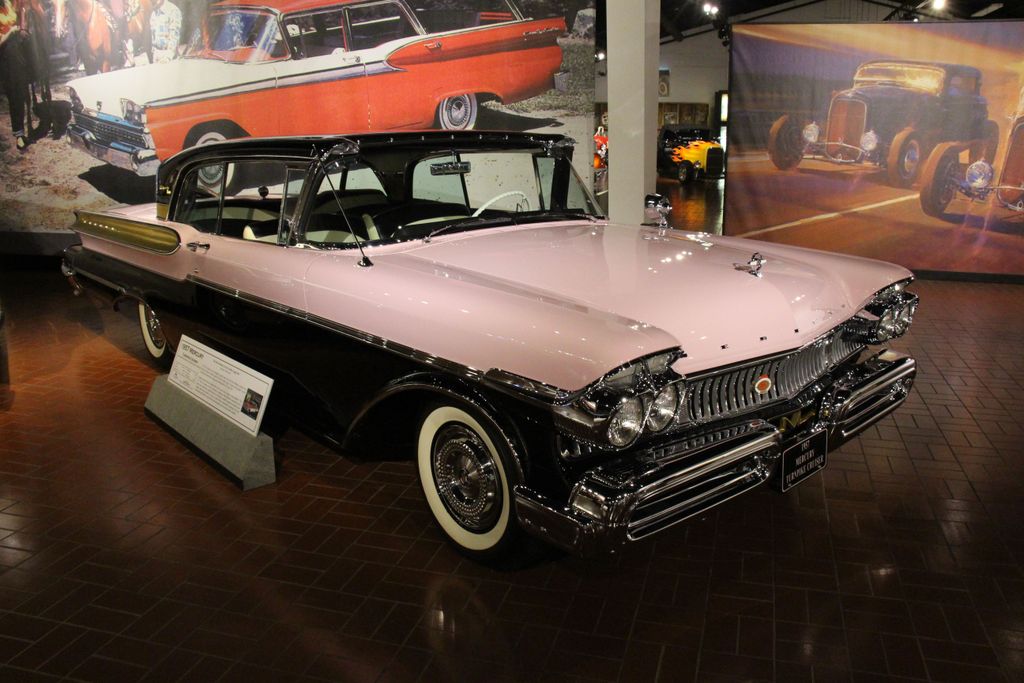
12. **1957-58 Mercury Turnpike Cruiser: Road Trip Royalty**The 1957-58 Mercury Turnpike Cruiser was conceived as a grand declaration of Mercury’s ambition, explicitly designed to dominate the burgeoning American highway system. This vehicle was a masterclass in bold styling, distinguished by its prominent rear fender antennas and an innovative array of push-button controls, features that underscored its futuristic vision and elevated luxury. It was a clear signal that Mercury intended to offer more than just budget-friendly options, aiming squarely for the premium market.
Designed for extended journeys, the Turnpike Cruiser was characterized by its immense size and exceptional comfort. Its spacious interior was thoughtfully appointed and loaded with an abundance of options, ensuring that long-distance travel was a luxurious experience. The car’s visual presence was equally assertive, available in “wild colors” and generously adorned with gleaming chrome in all the right places, making it an undeniable head-turner on any roadway. This combination of comfort, bold aesthetics, and advanced features truly positioned it as “Road Trip Royalty.
In the collector’s market, the Mercury Turnpike Cruiser is celebrated for its distinctive mid-century styling and its embodiment of the era’s fascination with the open road. Its unique features and luxurious appointments make it a compelling piece of automotive history, reflecting a period when cars were designed not just for travel, but for an experience. Its enduring legacy is a testament to Mercury’s audacious attempt to redefine its brand and offer a vehicle that truly captured the spirit of American touring.
Car Model Information: 2024 Acura RDX Base
Name: Mercury Turnpike Cruiser
Caption: 1957 Mercury Turnpike Cruiser
Manufacturer: Mercury (automobile)
Aka: Mercury Convertible Cruiser
ModelYears: 1957–1958
Assembly: St. Louis, Missouri,Pico Rivera, California,Metuchen, New Jersey
Chassis: body-on-frame
Successor: Mercury Park Lane
Class: Full-size car
BodyStyle: hardtop
Layout: FR layout
Engine: Convert,Lincoln Y-block V8 engine#368,V8 engine,Convert,Ford MEL engine#383,V8 engine,Convert,Ford MEL engine#430,V8 engine,Convert,Ford MEL engine#430,V8 engine
Transmission: Cruise-O-Matic#Cruise-O-Matic,Automatic transmission
Wheelbase: Convert
Length: Convert
Width: Convert
Height: Convert
Weight: Convert
Related: Mercury Montclair,Mercury Monterey,Mercury Colony Park
Sp: us
Categories: Articles with short description, Cars introduced in 1957, Mercury vehicles, Short description is different from Wikidata
Summary: The Mercury Turnpike Cruiser is a series of automobiles that were produced by the Mercury division of Ford for the 1957 and 1958 model years. Named to commemorate the creation of the Interstate Highway System, the Turnpike Cruiser was marketed as the flagship Mercury model line, slotted above the Montclair when Mercury was positioned upmarket to luxury status when Edsel was introduced in 1958.
The Turnpike Cruiser was produced as a luxury two-door and a four-door hardtop sedan. During the 1957 model year, a convertible, called the Convertible Cruiser, was offered on a limited basis, which served as a pace car for the Indianapolis 500 auto race. Mercury fitted the Turnpike Cruiser with a wide variety of advanced features for the time of its production, including a retractable rear window marketed as the “Breezeway”, compound-curve windshield, mechanical pushbutton transmission controls and a trip computer.
In total, 23,268 examples of the Turnpike Cruiser were produced over two years. Mercury discontinued the Turnpike Cruiser for the 1958 model year, phasing its content into the Park Lane product line.
Get more information about: Mercury Turnpike Cruiser
Buying a high-performing used car >>>
Brand: Mercury Model: Turnpike Cruiser
Price: $45,000 Mileage: 6,140 mi.
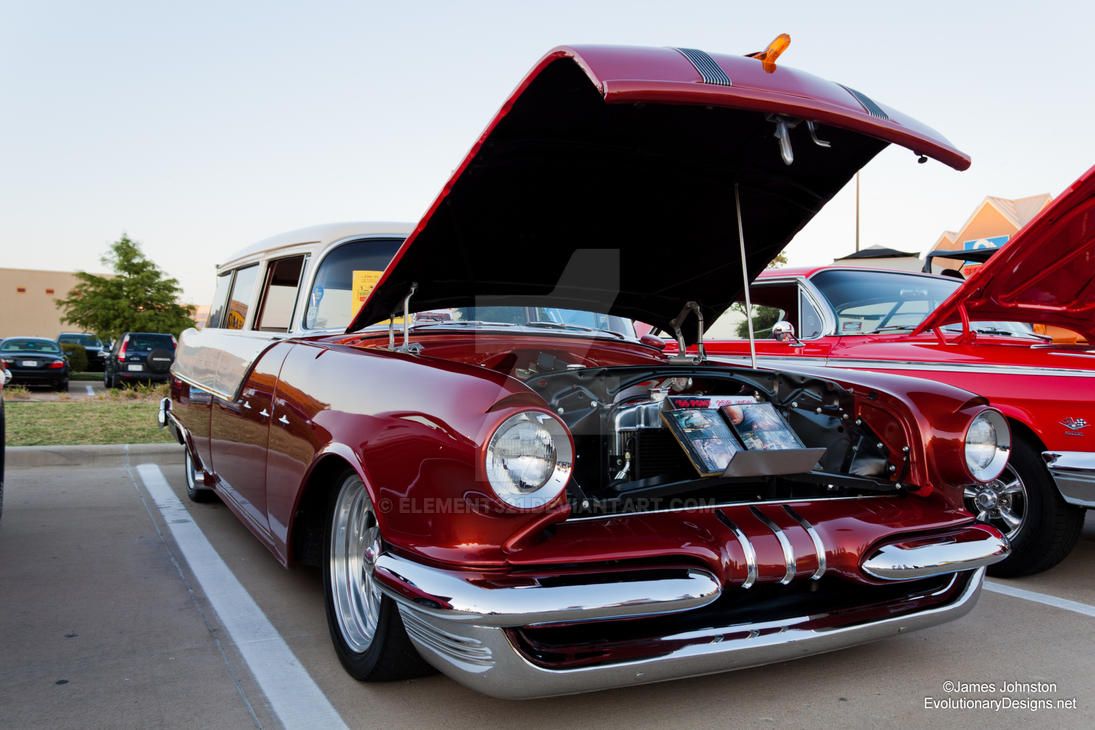
13. **1955-57 Pontiac Safari: The Rare Wagon That Stunned**The 1955-57 Pontiac Safari stands as a truly remarkable example of mid-century automotive design, sharing its distinctive “greenhouse” roofline with the highly celebrated Chevrolet Nomad. However, the Safari transcended its humble wagon roots by infusing an extraordinary level of flair and exclusivity. Pontiac meticulously integrated unique trim elements and offered an array of “bold two-tone paint options,” elevating the Safari from a mere utility vehicle to a bona fide style icon. This intentional enhancement created a vehicle that was both functional and aesthetically stunning.
Initially, these Safari wagons were both “rare and pricey,” a reflection of their premium positioning and the specialized craftsmanship involved in their production. This exclusivity immediately set them apart from more common station wagons of the era, bestowing upon them a unique cachet. Their sophisticated styling, combined with practical versatility, made them a truly desirable, albeit elusive, option for discerning buyers who wanted to stand out.
Today, the 1955-57 Pontiac Safari is unequivocally considered “collector gold.” Its scarcity, coupled with its captivating design and shared lineage with the iconic Nomad, ensures that it continues to “draw crowds wherever they go.” This rare wagon’s enduring legacy lies in its successful demonstration that practicality could coexist with high fashion, proving that a family vehicle could also be an object of desire and a timeless piece of automotive art.
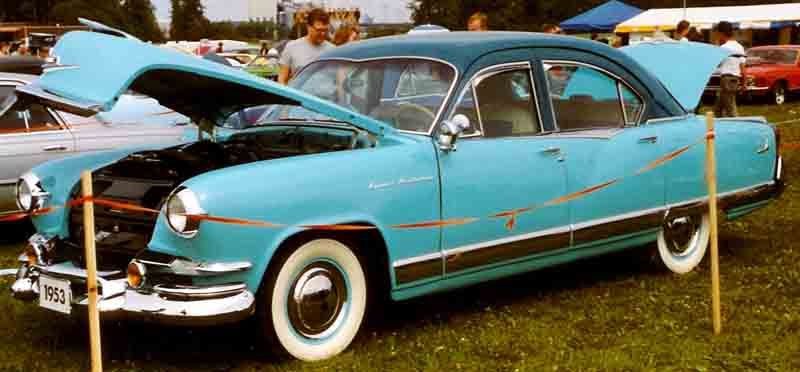
14. **1951-53 Kaiser Dragon & Manhattan: Forgotten But Fantastic**The 1951-53 Kaiser Dragon and Manhattan models, though never achieving the widespread commercial success of their larger competitors, represent a fascinating chapter in 1950s automotive design. These cars were brimming with “interesting design touches” that set them apart, showcasing Kaiser’s commitment to innovation even as a smaller player in a highly competitive market. Their visual distinctiveness offered a refreshing alternative to the more conventional styling cues of the era.
From their “sweeping lines” and “interesting rooflines” to their uniquely “cool interiors,” the Dragon and Manhattan exuded a sense of forward-thinking design. Perhaps most notably, one particular model even featured doors that ingeniously “slid into the body,” a truly revolutionary concept that anticipated future automotive solutions. This audacious engineering, while perhaps too avant-garde for the mainstream market at the time, highlights Kaiser’s willingness to experiment and push boundaries.
Despite their relative obscurity in mainstream automotive narratives, when one encounters a Kaiser Dragon or Manhattan today, they are undeniably “unforgettable.” Their rarity, coupled with their eccentric yet thoughtful design elements, makes them highly prized by collectors who appreciate the overlooked gems of automotive history. These vehicles serve as a poignant reminder that innovation often takes various forms, and true distinction can be found beyond the sales charts, securing their legacy as fantastic, if forgotten, classics.
Car Model Information: 2024 Acura RDX Base
Caption: 1953 Jade Dragon
Name: Kaiser Dragon
Production: 1953
Manufacturer: Kaiser Motors
Class: Full-size car
BodyStyle: sedan (car)
Layout: Front-engine, rear-wheel drive layout
Engine: 226.2 CID
Abbr: on
Transmission: 3-speed manual, Hydramatic automatic
Wheelbase: 118.5 in
Length: 211.2 in
Width: 74.0 in
Categories: Articles with short description, Cars introduced in 1953, Cars of the United States, Kaiser Motors, Short description is different from Wikidata
Summary: The Kaiser Dragon is a car model based on the second-generation Kaiser that was manufactured by Kaiser Motors Corporation in 1953. The dragon name was first used in 1951 for a special trim option on Kaiser cars featuring vinyl upholstery claimed to resemble dragon skin.
Get more information about: Kaiser Dragon
Buying a high-performing used car >>>
Brand: Kaiser Model: Dragon & Manhattan
Price: $45,000 Mileage: 6,140 mi.
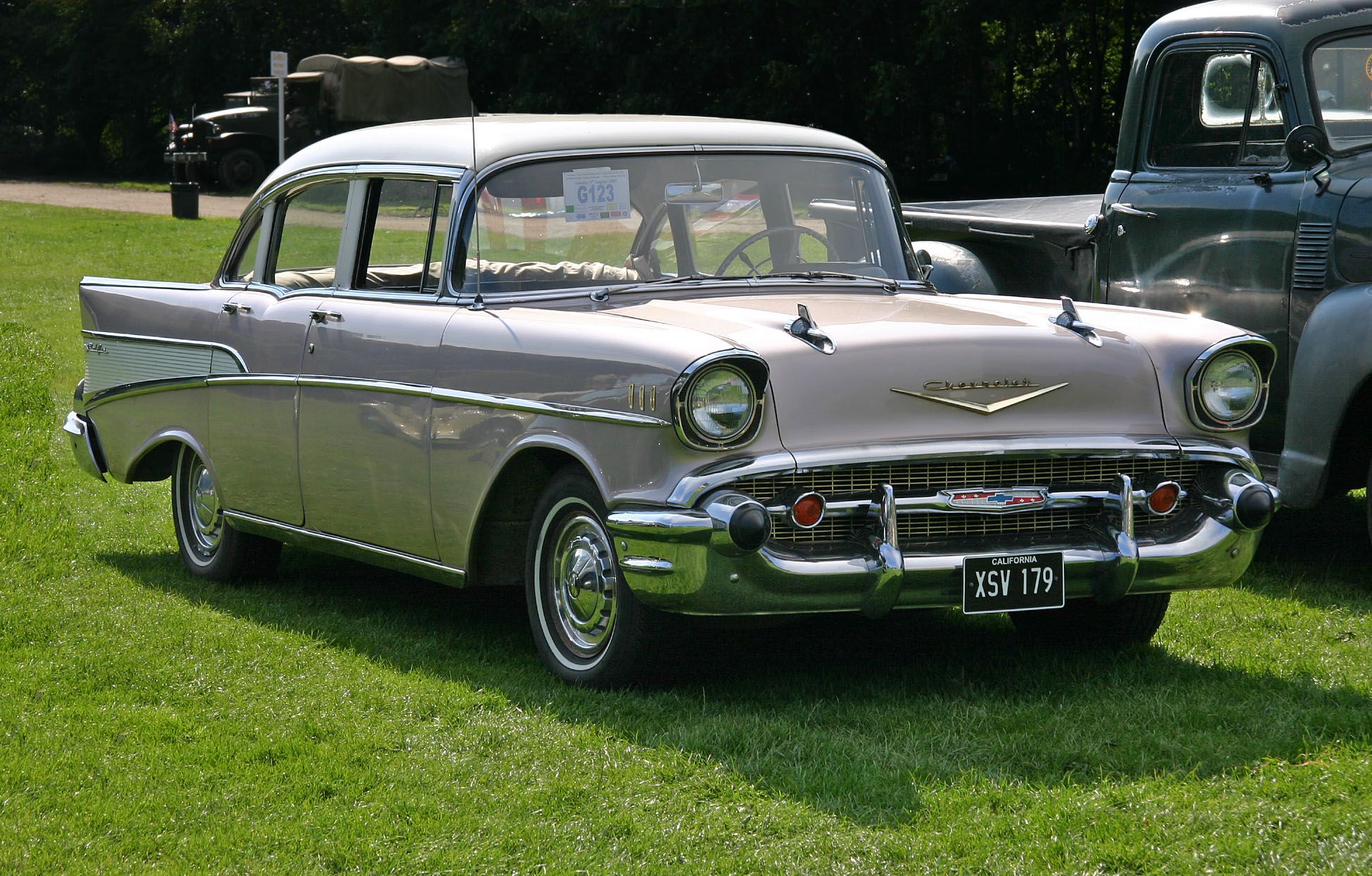
15. **1955-57 Chevrolet “Tri-Five” Series: America’s Favorite**The 1955, 1956, and 1957 Chevrolets, collectively revered as the “Tri-Five” series, unequivocally defined the post-war economic boom and became synonymous with American optimism and style. This iconic trio offered an unparalleled combination of robust “V8 power,” an seemingly “endless” array of trim options, and a “timeless styling” that resonated deeply with the American public. Their instant popularity quickly cemented their status as “the most popular collector cars ever,” a title they retain with pride.
Each year of the Tri-Five series presented distinct aesthetic refinements, from the elegant simplicity of the ’55, to the cleaner lines of the ’56, and the flamboyant tailfins and grilles of the ’57. Models like the ’56 Nomad wagon and the quintessential ’57 Bel Air convertible continue to be “stars at shows across the country,” drawing admiring crowds and sparking conversations among enthusiasts. Their enduring appeal lies not just in their beauty, but in their accessibility and the sheer variety of configurations available.
The cultural impact of the Tri-Five Chevys is immeasurable. They became deeply ingrained in the fabric of American society, serving as the quintessential family car, hot rod, or cruiser for an entire generation. Indeed, the sentiment that “if you grew up in the ’50s, you probably either had one or wanted one” speaks volumes about their pervasive presence and aspirational quality. Their timeless design, combined with their robust mechanicals and widespread affection, ensures their continued reign as undisputed legends in the classic car market, perpetually symbolizing the golden age of American motoring.
As we conclude this exhilarating tour through the iconic automobiles of the 1950s, it becomes abundantly clear that these machines were far more than just metal, glass, and rubber. They were vibrant canvases upon which the spirit of a burgeoning nation was painted—a nation brimming with confidence, boundless creativity, and an insatiable desire for progress. Each sweeping tailfin, gleaming chrome accent, and powerful V8 engine tells a story of innovation, luxury, and the unbridled freedom of the open road.
Car Model Information: 2024 Acura RDX Base
Categories: 1950s cars, All articles with vague or ambiguous time, Articles with short description, Cars introduced in 1955, Cars introduced in 1956
Summary: In automobile parlance, Tri-Five refers to the 1955, 1956 and 1957 Chevrolet automobiles, in particular, the 150, 210, Bel Air, and Nomad. Revolutionary in their day, they spawned a devoted following that exists in clubs, websites and even entire businesses that exclusively cater to the enthusiasts of the Tri Five automobiles. All featured a common for the era front-engine, rear-wheel-drive layout. They remain some of the most popular years of Chevrolets for collectors, (resto-)modders, and hot-rodders.
Get more information about: Tri-Five
Buying a high-performing used car >>>
Brand: Chevrolet Model: Tri-Five Series
Price: $45,000 Mileage: 6,140 mi.
From the audacious grandeur of the 1959 Cadillac to the beloved versatility of the Tri-Five Chevys, these cars embody a golden age when design knew no bounds and engineering dared to dream big. Their legacy isn’t merely confined to the polished floors of museums or the meticulously maintained garages of collectors; it pulsates in the very heart of American culture. They remind us of a time when cars were not just tools but true extensions of identity, symbols of prosperity, and exhilarating declarations of individuality. Their timeless allure ensures that the roar of their engines and the gleam of their chrome will continue to captivate generations to come, forever cementing the 1950s as a truly unforgettable era in automotive history. These rad machines truly were, and remain, some of America’s greatest ever.


